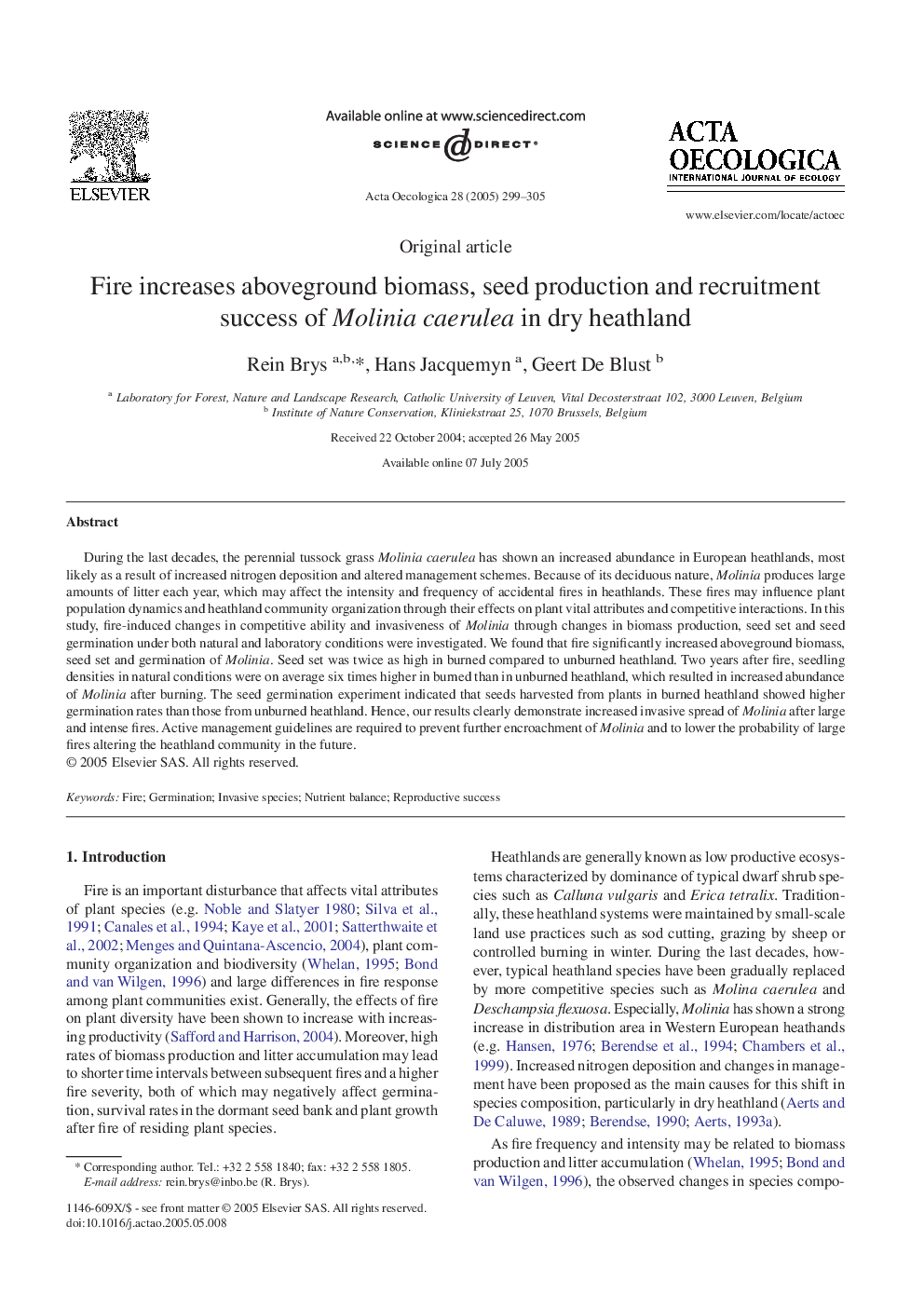| Article ID | Journal | Published Year | Pages | File Type |
|---|---|---|---|---|
| 9444967 | Acta Oecologica | 2005 | 7 Pages |
Abstract
During the last decades, the perennial tussock grass Molinia caerulea has shown an increased abundance in European heathlands, most likely as a result of increased nitrogen deposition and altered management schemes. Because of its deciduous nature, Molinia produces large amounts of litter each year, which may affect the intensity and frequency of accidental fires in heathlands. These fires may influence plant population dynamics and heathland community organization through their effects on plant vital attributes and competitive interactions. In this study, fire-induced changes in competitive ability and invasiveness of Molinia through changes in biomass production, seed set and seed germination under both natural and laboratory conditions were investigated. We found that fire significantly increased aboveground biomass, seed set and germination of Molinia. Seed set was twice as high in burned compared to unburned heathland. Two years after fire, seedling densities in natural conditions were on average six times higher in burned than in unburned heathland, which resulted in increased abundance of Molinia after burning. The seed germination experiment indicated that seeds harvested from plants in burned heathland showed higher germination rates than those from unburned heathland. Hence, our results clearly demonstrate increased invasive spread of Molinia after large and intense fires. Active management guidelines are required to prevent further encroachment of Molinia and to lower the probability of large fires altering the heathland community in the future.
Related Topics
Life Sciences
Agricultural and Biological Sciences
Ecology, Evolution, Behavior and Systematics
Authors
Rein Brys, Hans Jacquemyn, Geert De Blust,
